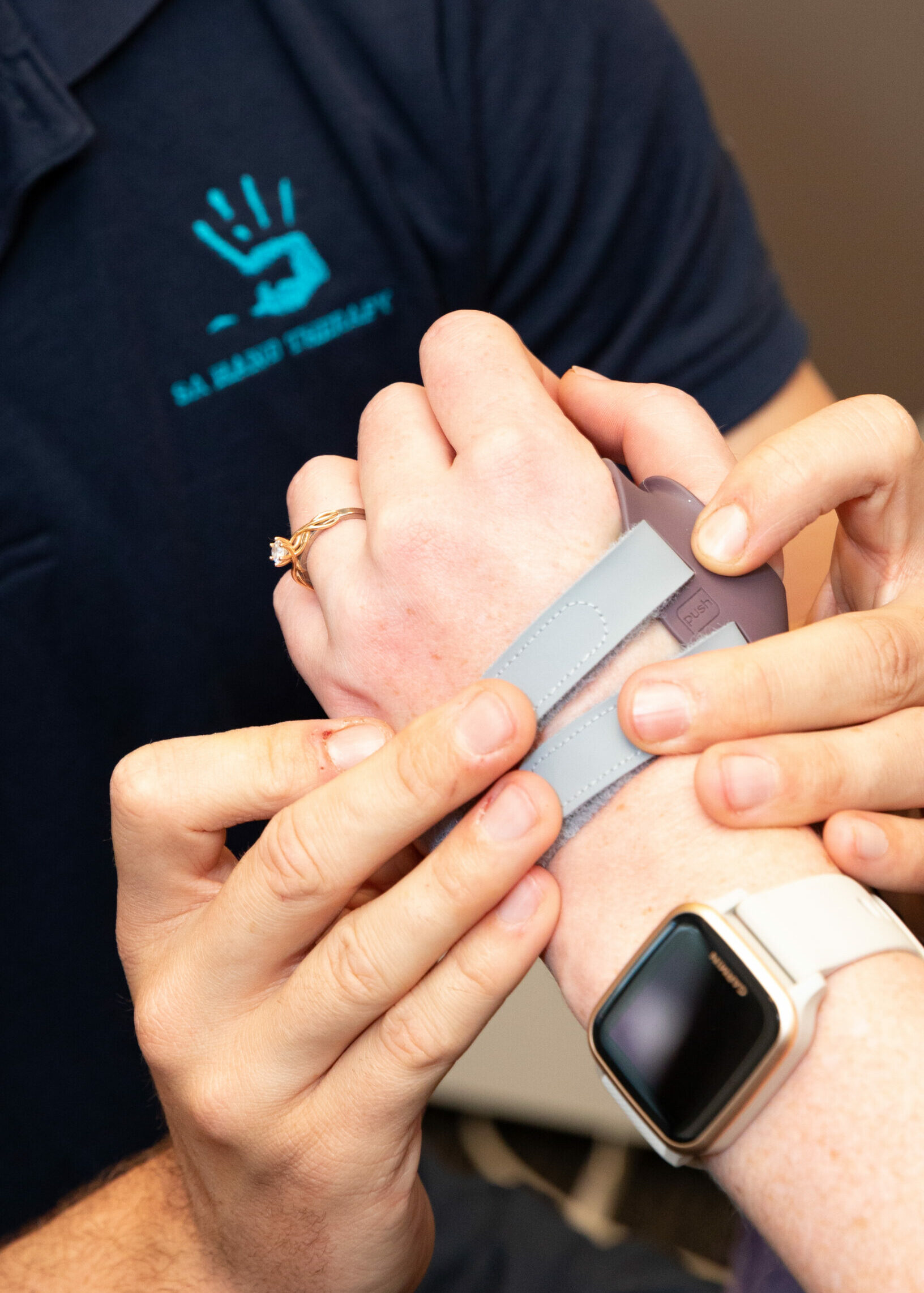
There are many factors that go into choosing an appropriate thumb splint. Key considerations such as the significance of the thumb pain, degree of arthritic change and when the splint is to be worn will aid a therapist and their decision making process. Splints for the thumb can be categorised into ‘functional’ splints or ‘resting’ splints.
A functional splint will be more flexible or allow function whereas a resting splint is designed to immobilise or significantly reduce movement. Splints can come in many forms and will be either ready-to-fit or custom-made. A variety of materials can be used to fabricate a custom splint including thermoplastics, neoprene or leather.
Thumb arthritis commonly produces an aching pain. Repetitive pinching and gripping are normally aggravating factors and will make the pain worse. Occasionally acute sharp pain might occur during specific movements such as opening a jar or holding a small object like a pen.
The purpose of considering a splint in the first place for thumb arthritis is to reduce pain and assist with the anatomical alignment of the carpo-metacarpal joint (base of thumb.) A better aligned joint will reduce micro-movement and improve thumb stability.
A working splint normally is selected based on the type of activity someone might need to be doing or prioritising. If there is pain during a specific activity, a splint might be needed that still allows someone to perform that activity with ease. For example, a nurse whom is routinely hand washing will need a splint that is easily removable with hygiene of the splint being a top priority. Older patients whom have fragile skin, might be better suited to a softer type of brace / splint. Heavy manual labouring could necessitate a very durable option such as a leather splint.
A resting splint is often helpful at nights or for sleep if someone is waking in the middle of the night or wakes with pain. Another reason for selection of this type of splint might be in an acute situation where pain is usually un-relenting or after an acute injury. Resting splints are also used after surgeries.
There is a lot of clinical reasoning and decision making that goes into selecting the most suitable thumb arthritis splint / brace. If wanting specific advice for your painful thumb, book in with one of our team.